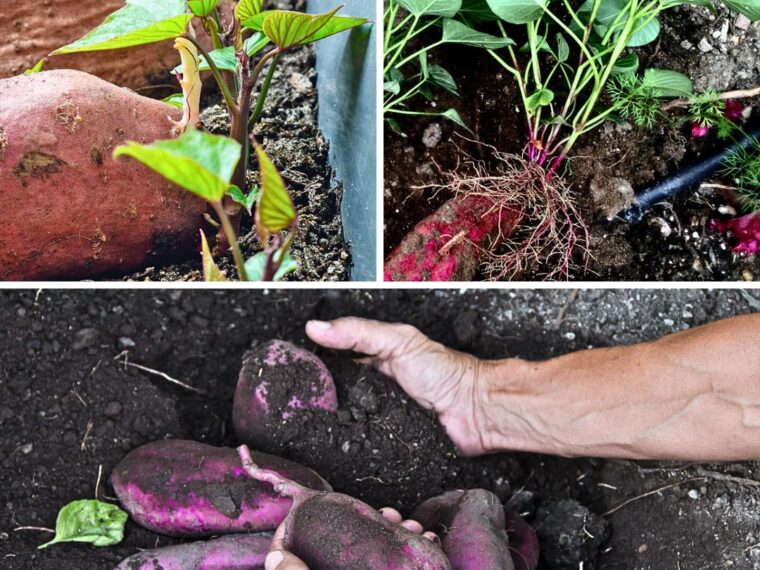4. Overwatering or Underwatering
Sweet potatoes require consistent moisture, especially during the early stages of growth. However, both overwatering and underwatering can lead to problems.
What to avoid:
- Overwatering can lead to root rot, especially in poorly drained soil.
- Underwatering can cause stunted growth and reduce the size of the tubers.
Best practice:
- Water the plants deeply once a week, ensuring that the soil remains consistently moist but not waterlogged.
- Mulch around the plants to help retain moisture and regulate soil temperature.
5. Planting in Poor Soil
Sweet potatoes prefer well-drained, sandy or loamy soil that is rich in organic matter. Planting in poor or heavy clay soil can lead to poor root development and small tubers.
What to avoid:
- Planting in compacted, heavy, or poorly drained soil.
- Neglecting to amend the soil with organic matter before planting.
Best practice:
- Prepare the soil by incorporating compost or well-rotted manure to improve drainage and fertility.
- Consider planting in raised beds if your garden soil is heavy or poorly drained.
6. Neglecting Pest and Disease Control
Sweet potatoes are relatively resistant to pests and diseases, but they can still fall victim to certain problems if not properly managed.
What to avoid:
- Ignoring signs of pest infestation, such as holes in leaves or wilting vines.
- Failing to rotate crops, which can lead to a buildup of soil-borne diseases.
Best practice:
- Regularly inspect your plants for signs of pests like sweet potato weevils, wireworms, and aphids.
- Use organic pest control methods, such as neem oil or insecticidal soap, if necessary.
- Rotate sweet potatoes with other crops every year to prevent disease buildup in the soil.
7. Harvesting Too Early or Too Late
TO CONTINUE READING PLEASE SEE NEXT PAGE




